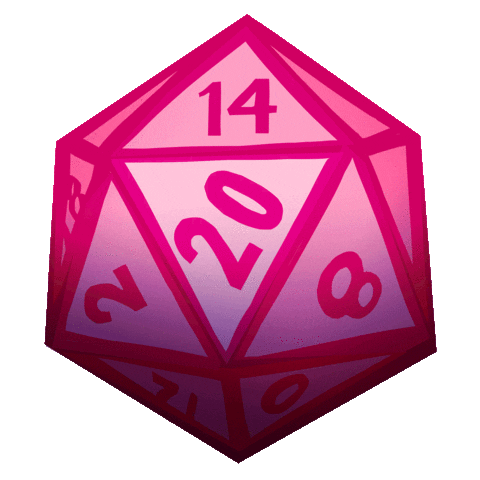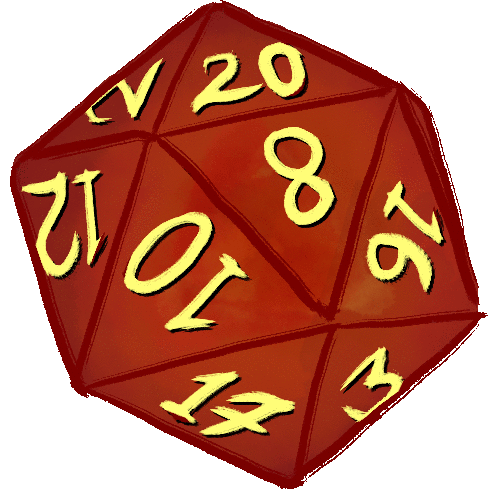Character Creation
Ability Scores and starting conditions:
-4d6 for each stat. assign as desired.
-Use Unseen Servant for rolls and link in a pm to me. Unseen servant Campaign id 510. If for some reason you don’t want to use Unseen Servant I will accept other die-rollers where all rolls can be made, tied to a character, and reviewed by me if necessary. If you can’t find a suitable alternative and still don’t want to use US, pm me and I’m sure we can figure something out.
-A single 1 pt ‘trade’ can be made between stats. Two trades of 1-pt each allowed for humans, and cannot affect the same stat.
-Point trades cannot take a score over 18. Exceptional strength cannot be ‘bought’ with a point trade (i.e. a fighter trading up to 18 would count as 18 str, not 18/01.)
-Max hps 1st lvl.
-Starting gold as standard plus some ‘free’ equipment related to class/race/background (to be specified by dm)
Races Allowed:
-Humans and all Demihumans from the Complete series [including Drow, Duergar, and Svirfneblin. These have additional xp cost associated, as do others]
-Most races from Complete Humanoid, (excluding: Beastmen, Fremlin, Saurials). Races from CH often have advantages and disadvantages you will be made aware of upon request if you don’t have access to the Complete Humanoid book. (Goblins and Kobolds get an extra +1 to dex)
-Other: I may allow additional races evaluated on a case-by case basis, but they should at least be humanoid. Also, no undead (incl half-undead) or lycanthropes. An odd race should be chosen for its RP potential, not as a tool for min/maxing.
-Racial ability score mins/maxes are loosely enforced, but no score can be over 19 even with racial adjustments.
-Height, Weight and Age can be chosen freely from anywhere in a race’s range. Hair and eye color can as well, and should be listed. Elves in Genwald are the tall-ish kind. Use height ranges from the human chart but weights from the elven chart.
Demihuman refers to typical non-human PC races such as those in the PHB and in the Complete Elf/Dwarf/Gnomes & Halflings books.
Humanoid refers to monsters that have two arms two hands, at least two legs, and stand generally upright.
Alignment:
-Almost anything goes, but stick to the non-evil side unless there is a specific reason not to. Even if there is a reason (and a good one) the character may not be allowed due to game/party balance. If my irl free-time permits I might be able to start a solo sideline, but at the moment I don’t see that happening.
-Certain races may have loose restrictions on alignment. Class and Kit restrictions are more rigid but may not be completely set in stone.
Classes:
-Almost any class is available, including unusual ones such as: Wild Mages & Elementalists (ToM), Psionics (TSR 2117, very rare for me), Ninjas (TSR 2155), Shamans (TSR 9507), barbarian variants (TSR 2148), All kits from the “Complete” series (The PHBR# batch) of sourcebooks are allowed but adjustments may be made. Certain races may be restricted by class, but it won’t be as stringent as the core rules.
-Class ability score minimums are enforced. Racial level caps can be exceeded by earning double experience for each level beyond the ‘cap’.
-Demihumans are not restricted from any Basic class (Fighter, Cleric, Mage, Thief), and may be allowed specific classes not normally allowed to them (Dwarf Paladin or Ranger, etc)
-Humanoids may be (but not always) allowed some version of each class type [Those not normally allowed to be Wizards might be allowed to become ‘Hedge Wizards’. Those not normally allowed to be Clerics may be allowed to become Druids, etc. Ability score requirements for special classes still apply.
-Only ‘Humanoid’ races may take the monstrous classes/kits/nwps provided in the Complete Humanoid book. There are often similar kits for humans and demihumans in the appropriate books.
-Multiclassing is allowed. Generally these follow racial restrictions, but are loosened up for demihumans and some humanoids. Races with life-spans on-par with or shorter than humans Dual Class rather than Multiclassing (any race with an avg max age under 120 yrs would dual-class)
Kits:
-Most kits from official 2e sources are allowed.
-Kits are restricted by: Ability score (tightly), Race (moderately), Culture (moderately)
[There are several house-ruled exceptions to the above, so ask when in doubt.]
Miscellaneous Other important stuff: (the remaining big 16 not covered above)
-Die rolls will be made on Unseen Servant and linked to the campaign. If you are aware of another die-roller that is free and allows links to archived rolls (Such as Invisible Castle did before it went down) I will accept those if they can be tied to a specific character (I know some people prefer not to use U.S. so I try to be reasonable about this). Otherwise I can make the rolls myself if the player agrees to that.
Allowed Rulebooks/Supplements:
The “Complete” series (The PHBR# sourcebooks) are allowed, the Players Option books are largely not used, but I may take certain small bits from them.
-Players will be expected to post a minimum of once every 3 days. Most times I check daily or every other day. Inactivity for 3 days will cause a character to be left behind or go into ‘auto mode’. After one week the character becomes a temporary npc, and they won’t be very interesting (follow the others around slack-jawed), and may wander off on their own. I’ll create a thread where players can post any extended absences they anticipate (vacations, illness, extended work things, etc).
-Character backgrounds (once required) should be a paragraph or two at minimum please!. What I am looking for: A peek at the character’s past, Main motivation (how they see the world), Reason for adventuring (even if it is wanderlust), quirks and personality, 2 potential plot hooks.
NWProficiencies:
I use NWPs instead of Secondary Skills. High Intelligence scores give you both the number of languages and bonus NWP slots. You cannot trade a language for another NWP. All demihumans/humanoids start with their native language for free, Humans get Common.
Example: A character with an Int of 16 gets to learn 5 languages and picks up 5 NWP points. These can be spent on ancient languages and the like. A character could not sacrifice a language to gain an extra NWP (i.e. taking only 4 languages to get 6 NWP slots is not allowed.)
The “Cantrip” NWP detailed in Dragon Magazione 221 is available
I will consider NWPs from the Netbook of Proficiencies linked below on a case-by-case basis when not found in the PHBR# batch of books (not counting Player’s option series). I am not using the graded specialization for weapons from this.
https://archive.org/stream/proficiencie ... bookV1.txt
Starter Spells and Spellbook.
A basic spellbook is free for mages/specialists, but additional ones must be purchased. Bards do not .
A wizard can start with 4 spells, but still has to roll their ’% chance to learn’ for each. A failure to learn a spell frees up that slot again, but the failed spell cannot be re-attempted until another level is gained. (Bob fails to learn magic missile to start, but when he reaches level 2, he can try again.) All wizards start with Read Magic and Detect Magic auto-magically
When a new spell level is reached (spell lvl 2 at char lvl 3 for a mage, or char lvl 4 for a bard as per PHB), the player gets a ‘freebie’ spell from that new spell level without having to roll to learn it. This spell will be selected by the DM (I’ll probably just roll for it) from a list of 3 to 9 spells the player is interested in. Thus if Bob really wants to get Fireball as a freebie, he should make a shorter list that includes Fireball to increase his chances. Even if he doesn’t get it this way, he can still learn it later.
A specialist can decide to select a new spell of their chosen school OR go for a ‘freebie’ from a different school as mentioned.
A wizards uses the max number of spells/level based on Intelligence. ‘freebies’ count towards this total, spells the character researches/invents on their own do not.
All 1st level spells from the splatbooks (PHBR# batch) are available. Spells from Tome of Magic and Players Option books are also available. Spells from the Wizards Compendium are not necessarily available unless found in one of the other sources. The icons used in the WC series to indicate the place origin are guidelines I will use to determine if they can be found. I will also use the rarity descriptions to determine likelihood they were encountered. Only 2 spells found exclusively in the WC can be submitted for starting characters to attempt (in order to prevent just a massive flood of spell questions from all the casters ;p)




